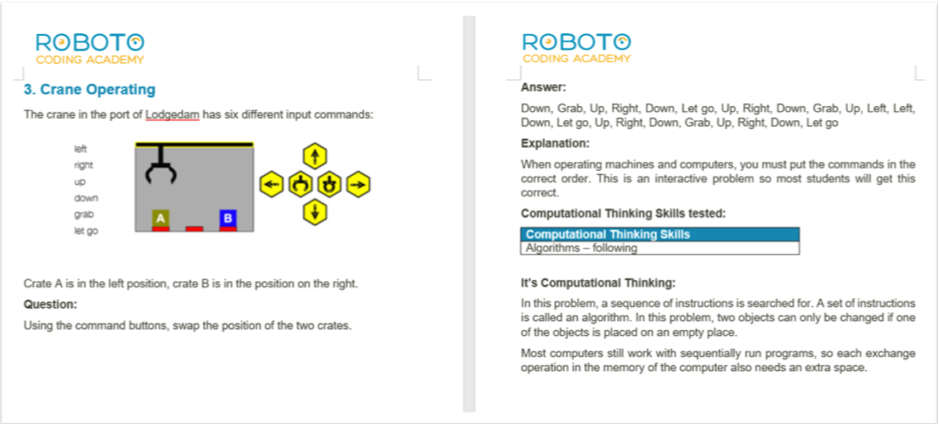Computational Thinking

You might have heard of Computational Thinking. It’s a buzzword floating around science and tech communities, and even amongst parents and educators these days. To understand the hype, let’s dive into what Computational Thinking is about.
What is Computational Thinking?
To fly a drone using code, the children were first introduced to Parrot mini-drones and the theory of drones. The theory explains the anatomy of the drone, the physics of drone-flying, and the various parts of the drone that determine its different movements. After introducing the hardware, the software was next. Courtesy of Apple, each child was provided with an iPad that came installed with Swift Playgrounds; it is an application by Apple that makes learning Swift programming interactive and fun so that kids can code in a “playful” environment. And with that, the coding began!
Ready, set, code!
While the ideas of Computational Thinking (CT) go back to as early as the 1950s, it only started to gain popularity in 2006. It was then that professor of computer science Jeanette Wing summarised CT as “solving problems, designing systems and understanding human behaviour by drawing on the concepts fundamental to computer science”.
In other words, CT is a skill that teaches you to analyse, think in a step-by-step manner, and come up with solutions in the form of easy-to-follow instructions. These instructions should be easy enough for a computer to carry out.
CT skills can be exercised through these four basic steps:
Decomposition:
Breaking down a complex problem into smaller and more manageable parts.
Pattern Recognition:
Spotting patterns shared between the current and past problems. If there are similarities, past solutions could be taken into consideration or applied to address parts of the current problem.
Abstraction:
A problem is often made up of details that are relevant and irrelevant to the solution. Abstraction is about focusing on those that are relevant and ignoring those that are not.
Algorithm:
This is when we design a set of instructions or rules. In this set of rules, the steps are put in a specific order for any human or computer to follow and ultimately achieve the intended outcome every time.
One of the notable disciplines that these four elements of CT can be applied to is in computer science, or a specific activity in computer science–coding. This is especially so when coders require analytical and methodical thinking to break down a complex problem into very precise steps, which are essentially bits of code the computer can process.
What is Computational Thinking?
The digital world shows no signs of slowing down. As jobs of the future become increasingly tech-related, it is important to equip your child with relevant skills such as CT to cope with the digital century.
However, unlike what its name suggests, CT is not only for those in computer-related careers. While the ideas of CT came from computer science, its principles can and has been adopted by many other fields. At its core, CT is a problem-solving skill. Other than applications in coding, CT can also be a life skill used to tackle daily problems – and you could use it too!
As it is today, Singapore is already working towards becoming a ‘Smart Nation’. There are several government initiatives and programmes that aim to introduce coding and CT to Singaporeans of all ages, including young pre-school kids. And this is where coding workshops, classes, and schools like Roboto Coding Academy come in.
Think ‘Computational Thinking’ with us
Ready to equip your child with CT skills? How about a programme where your kids can code as they cultivate CT skills?
You might like to consider Roboto Coding Academy’s Genius Coder Programme (GCP) – our academy’s weekly coding lessons for children ages 6 and above. Through GCP, your child will be able to learn to code for fun and develop CT skills in activities that include programming languages such as Scratch, and coding robots like mBots.
Here’s a sneak peek into our GCP classes:

Learning patience and perseverance through coding
At Roboto Coding Academy, we believe in a personalised curriculum to suit each child. To cater to your child’s learning needs, our academy will assess his or her computational thinking level based on age and ability using our standardised CT-testing instruments. These tests are in accordance with international standards and will be done before and after the course. Here are some examples of the test questions below.


Like what you see? If you have any questions about the Genius Coder Programme, please feel free to reach us at hello@roboto.sg or Whatsapp us at +65 9193 8589.